25+ SAMPLE Building Construction Agreement
-
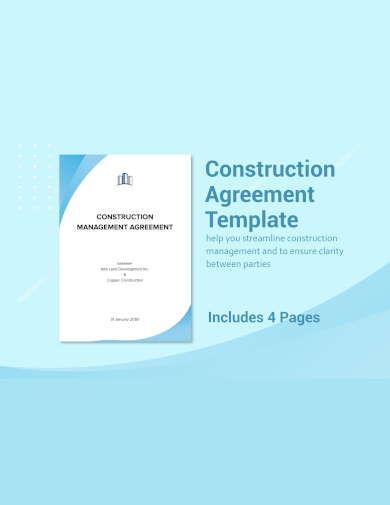
Construction Agreement Template
download now -
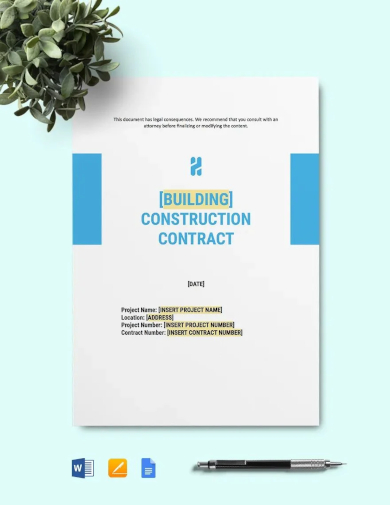
Building Construction Contract Template
download now -
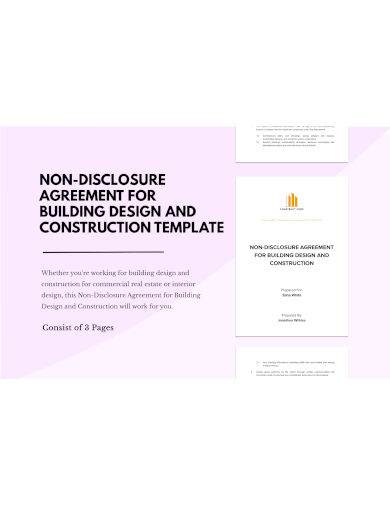
Non-Disclosure Agreement for Building Construction
download now -

Construction License Agreement Template
download now -
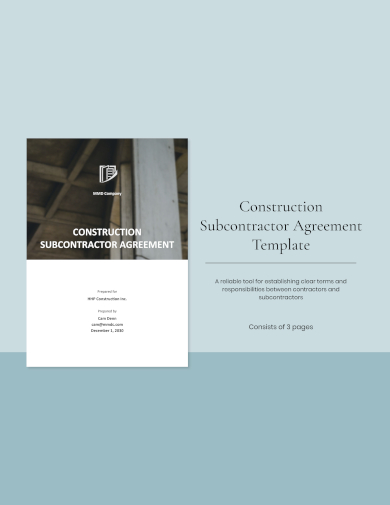
Construction Subcontractor Agreement Template
download now -

Building Construction Subcontractor Agreement
download now -
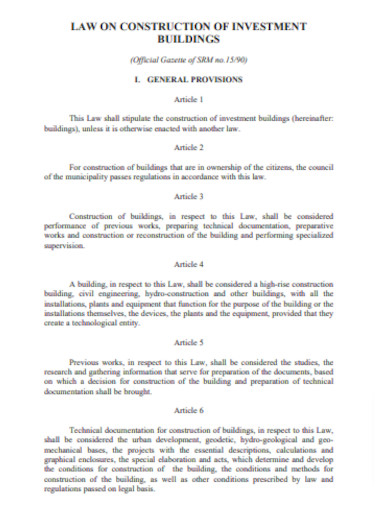
Construction Investment Building Agreement
download now -
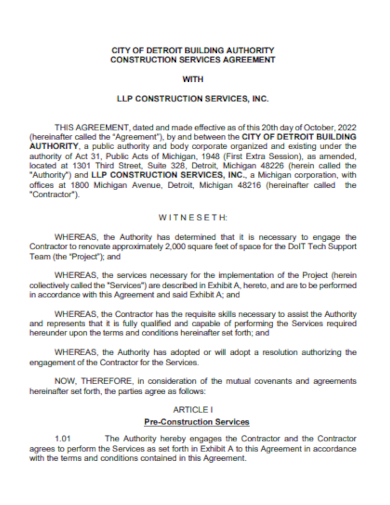
Building Pre-Construction Agreement
download now -
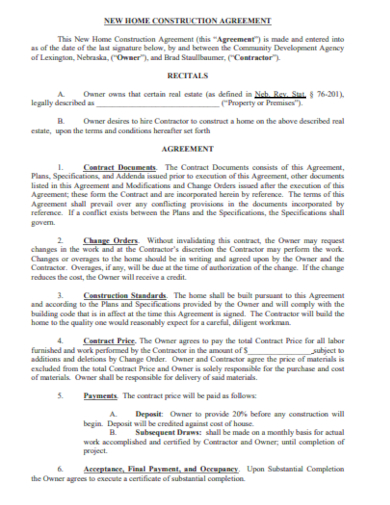
New Building Construction Agreement
download now -

Design Build Pre-Construction Agreement
download now -
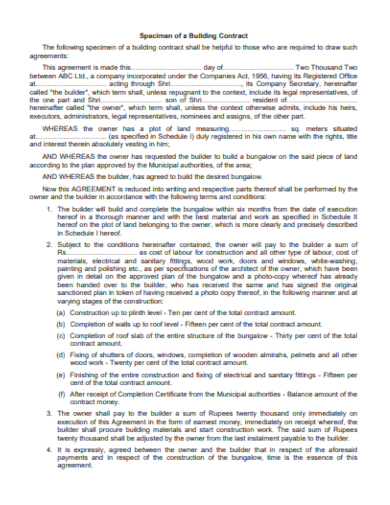
Building Construction Contract
download now -

Owner Building Construction Agreement
download now -
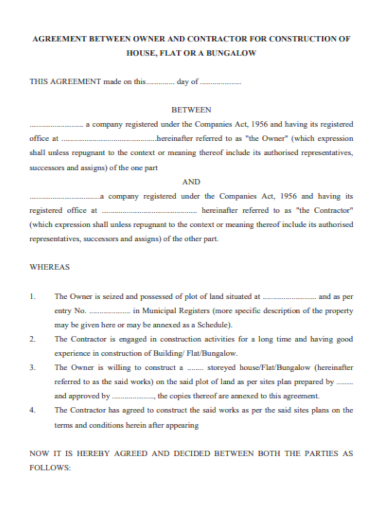
House Building Construction Agreement
download now -

Contract for Building Construction
download now -
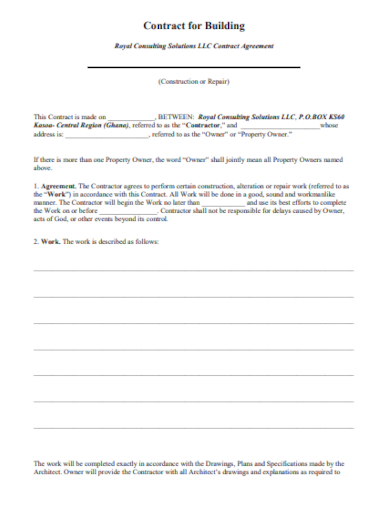
Building Construction Contract Agreement
download now -
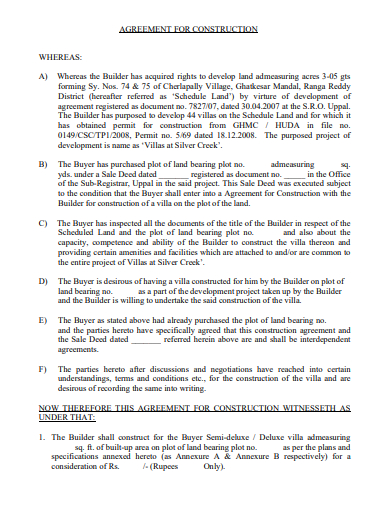
Builder Construction Agreement
download now -
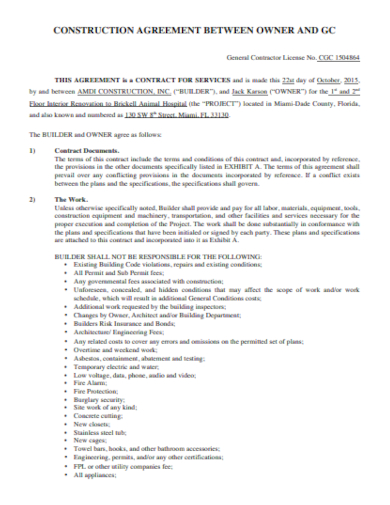
Contractor Building Construction Agreement
download now -
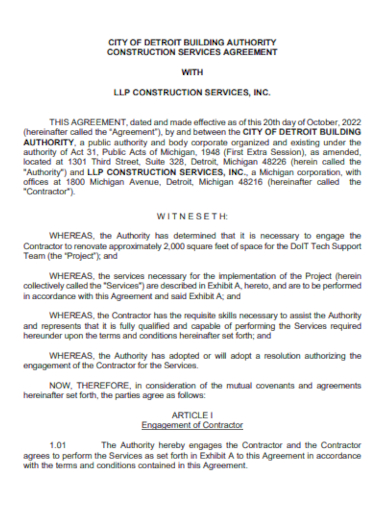
Building Construction Services Agreement
download now -
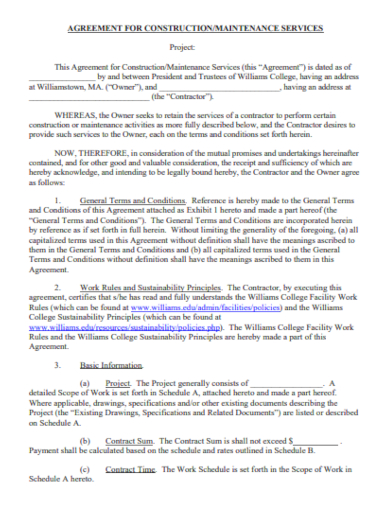
Building Construction Maintenance Agreement
download now -

School Building Construction Agreement
download now -
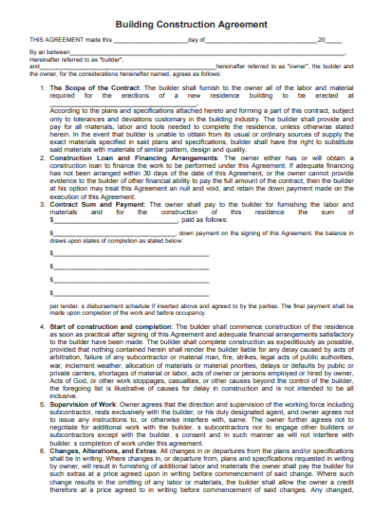
Building Construction Agreement Format
download now -
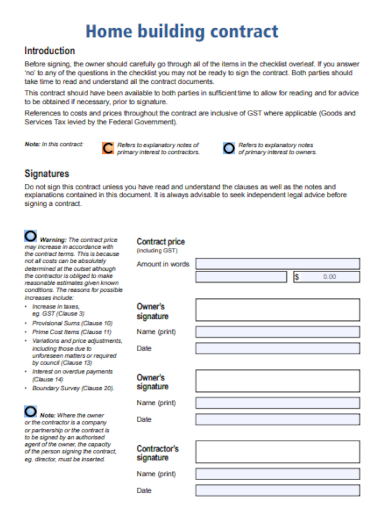
Home Building Construction Contract
download now -
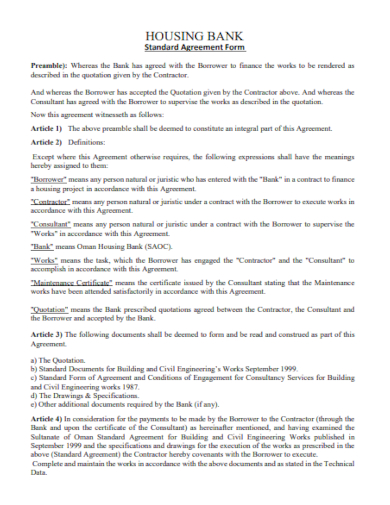
Standard Building Construction Agreement
download now -
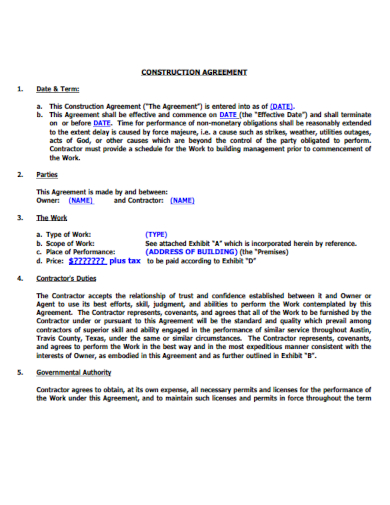
Real Estate Building Construction Agreement
download now -
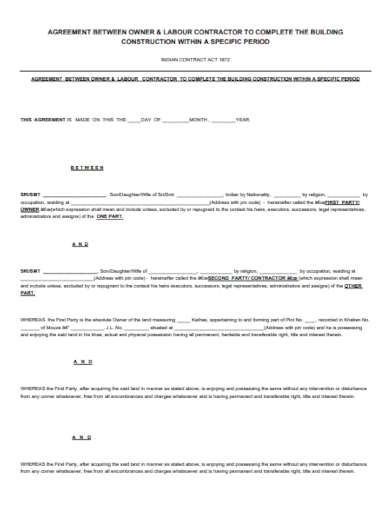
Labour Contractor Building Construction Agreement
download now -
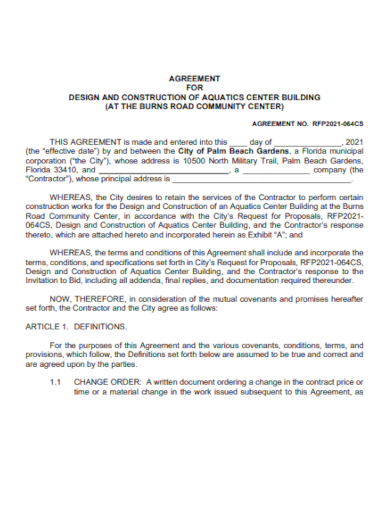
General Building Construction Agreement
download now
FREE Building Construction Agreement s to Download
25+ SAMPLE Building Construction Agreement
Definition:
Understanding the Building Construction Agreement:
Decoding the Blueprint of a Construction Agreement:
Building Beyond the Basics: How to Ensure Compliance and Satisfaction
Navigating Through Challenges: The Role of Effective Contract Management
What is the estimated timeline for completing a construction project?
How are disputes resolved according to a building construction agreement?
Why are warranties important in a construction contract?
Should Subcontractors need to hire a lawyer to review their construction agreement?
What records should be kept during the construction process?
Definition:
A Building Construction Agreement is a legally binding document between a property owner and a contractor that outlines the terms, conditions, scope, and responsibilities for a construction project. It specifies timelines, payment schedules, materials to be used, and compliance with building codes, ensuring clarity and commitment from both parties to fulfill the agreed-upon construction objectives and standards.
Understanding the Building Construction Agreement:
In the dynamic sphere of building construction, the importance of a solid Building Construction Agreement cannot be overstressed. It’s the legal backbone that supports the intricate relationship between a property owner and the construction firm tasked with bringing architectural visions to life. This contract is the narrative of the construction project agreement, charting the course from groundbreaking to the ribbon-cutting ceremony.
Decoding the Blueprint of a Construction Agreement:
A Building Construction Agreement should act as the definitive guidebook, containing:
The Genesis of a Construction Project: The Agreement
Before the first stone is laid, a construction agreement sets the stage for the work to come. It is a comprehensive contract that meticulously details the expectations, roles, and responsibilities of all parties involved in the building process. The agreement safeguards the interests of property owners and contractors, ensuring clarity and consensus on the path forward.
The Financial Framework: Costs and Payments
Central to any construction agreement is the financial framework that binds the project. This includes a detailed breakdown of the total cost, payment schedules, and any allowances or contingencies for unexpected expenses. It’s designed to establish financial transparency, laying out when payments will be made, under what conditions, and what penalties exist for late payments.
Timeline and Delivery: Tracking the Construction Lifeline
A realistic timeline is critical, and the construction agreement outlines each phase of the project, from groundbreaking to final inspection. It includes completion dates for each phase, overall project deadlines, and the repercussions for missing these key milestones. This segment is the chronometer of the construction process, ensuring that time is tracked, respected, and managed.
Quality and Compliance: Upholding Standards
Every building contract must adhere to a set of quality standards and legal regulations. The agreement includes clauses that ensure compliance with local building codes, material specifications, and workmanship quality. It is the quality control mechanism of the contract, guaranteeing that the construction meets all safety and performance criteria.
Liability and Risk Allocation: Safeguarding Against the Unforeseen
Construction is fraught with risks, and the agreement delineates liability, outlines insurance requirements, and describes the indemnity provisions. This section clarifies who is responsible for what if things go awry, from accidents on the job site to structural failures, ensuring that risks are equitably distributed and managed.
Amendments and Changes: The Art of Flexibility
Change is inevitable, and the house construction contract anticipates this with provisions for modifications and alterations. This part explains how the contract will adapt to changes in project scope, materials, or unforeseen circumstances, ensuring that the project remains fluid while also maintaining its structural integrity.
Dispute Resolution: Navigating Conflicts
Disagreements can emerge, and a section of the construction license agreement is dedicated to outlining the method of dispute resolution. It establishes the process for mediation, arbitration, or, if necessary, litigation to resolve conflicts. This ensures that all parties have a clear understanding of how disputes will be handled, minimizing the potential for protracted and costly legal battles.
The Closing Act: Execution and Signatures
The culmination of the construction agreement is its execution. This section covers the necessary final reviews, the conditions for the contract to take effect, and the signatures that seal the deal. It’s a formality that carries significant weight, as it marks the commitment of all parties to abide by the terms laid out in the agreement, and kicks off the construction journey.
Building Beyond the Basics: How to Ensure Compliance and Satisfaction
A Building Construction Agreement serves as more than a legal requirement; it’s a tool for compliance and satisfaction:
Laying the Groundwork: Understanding Compliance
For any construction project, the foundation of success lies in understanding and adhering to the intricate web of compliance regulations. This means staying abreast of zoning laws, building codes, environmental regulations, and occupational safety requirements. Compliance ensures that construction practices meet legal standards, minimizing the risk of costly delays, fines, or legal entanglements.
Constructing Confidence: Building to Code
Compliance is not merely about checking off boxes; it’s about constructing with confidence and integrity. The construction agreement should incorporate specific standards for materials and building practices that align with current codes. Regular inspections and audits should be stipulated, ensuring that every phase of the construction is up to par and deviations are addressed promptly.
Financing with Foresight: Financial Compliance
Financial oversight is just as critical as structural integrity. The agreement must detail transparent financial practices, including accurate record-keeping, tax adherence, and proper allocation of funds. Payment schedules should be tied to milestones, and clear records maintained to ensure that each dollar is accounted for and spent in compliance with the outlined budget.
The Human Element: Ensuring Safety and Ethical Labor Practices
The true backbone of any construction project is its workforce. Compliance with labor laws and safety regulations protects not just the project, but the people who bring it to life. The agreement should enforce fair labor practices, a commitment to safety training, and the provision of a hazard-free work environment.
Embracing Environmental Stewardship:
Sustainability and environmental protection have become pivotal in modern construction. The agreement must reflect a commitment to eco-friendly practices, from waste management and material sourcing to energy efficiency. Compliance in this regard not only satisfies regulatory demands but also reflects a broader corporate responsibility to the planet and future generations.
Navigating Changes with Agile Compliance:
Change orders are an inevitable part of construction. The agreement should outline a flexible yet structured approach to manage these changes, ensuring that compliance is maintained even when the project’s scope shifts. This agility enables the project to adapt without compromising on legal, safety, or quality standards.
Resolving Disputes with Dignity:
Even with the best planning, disputes may arise. A robust agreement provides for a clear and dignified process for resolving issues, whether through negotiation, mediation, or arbitration. This structured approach to conflict resolution can save relationships and reputations, and ensure that the project can move forward to a successful completion.
Signing Off with Success: The Completion Protocol
A construction management agreement is not truly complete until all parties agree that it meets the agreed-upon standards. The agreement should specify a comprehensive completion protocol, which includes final inspections, punch lists, and obtaining all necessary occupancy permits. This final compliance check ensures that every aspect of the project is finished to the satisfaction of all stakeholders.
Navigating Through Challenges: The Role of Effective Contract Management
Effective contract management involves:
Streamlining Communication Channels:
A construction project is only as effective as its lines of communication. The contract must establish streamlined channels for clear, consistent, and documented communications among all parties involved. Regular meetings, reporting systems, and agreed-upon communication tools can ensure that everyone is on the same page and that information flows smoothly.
Incorporating Flexibility for Scope Changes:
Scope changes are inevitable in the construction industry. An effective contract accommodates such changes with clear change order processes. This includes predefined mechanisms for pricing, approval, and implementation of changes, ensuring that they are handled efficiently and with minimal disruption to the project timeline.
Ensuring Contractual Compliance with Technology:
Leveraging technology for contractor agreement can significantly enhance efficiency and compliance. Digital tools can track project progress, document changes, and ensure that contractual obligations are being met. Integrating software solutions that offer real-time updates and compliance alerts can keep the project on track and within legal parameters.
Building Strong Relationships with Stakeholders:
Contract management is not just about managing paper; it’s about managing relationships. Building strong, cooperative relationships with stakeholders based on trust and transparency can lead to better negotiation outcomes, faster problem resolution, and a more cohesive project environment.
Financial Oversight and Control Measures:
Effective contract management includes stringent financial oversight. This means implementing control measures such as regular budget reviews, cost tracking, and audit trails. The contract should enable financial accountability, ensuring that all parties adhere to the agreed financial terms and project budget.
Training and Empowerment for Contract Administrators:
Contract administrators play a crucial role in navigating through challenges. They must be well-trained and empowered to make decisions that align with the contract’s terms. Their role in facilitating contract execution, amendment, and enforcement is essential for smooth project progression.
Finalizing Projects with a Definitive Close-Out Process:
An effective contract management strategy includes a well-defined project close-out process. This ensures that all contractual elements have been satisfied, all payments have been made, and all necessary documentation has been submitted and approved. A clear close-out process sets the stage for finalizing the project to the satisfaction of all parties involved.
What is the estimated timeline for completing a construction project?
The estimated timeline for completing a construction project varies widely depending on the project’s scope, size, complexity, location, and resources. Smaller projects may take a few months, while larger ones can span several years. Customized timelines are established during the planning phase.
How are disputes resolved according to a building construction agreement?
Building Construction Agreements typically include dispute resolution clauses outlining steps like negotiation, mediation, arbitration, or litigation. They specify the process to be followed, which often encourages resolution through less formal means before escalating to legal action.
Why are warranties important in a construction contract?
Warranties in a Construction Contract are crucial because they assure the quality and longevity of the work performed. They protect the client against defects and failures, providing a legal recourse to have issues remedied within a specified period after completion.
Should Subcontractors need to hire a lawyer to review their construction agreement?
Subcontractors should consider hiring a lawyer to review their subcontractor construction agreement to ensure the terms are fair, legal obligations are clear, and to protect their rights, especially regarding payment terms, scope of work, and liability issues.
What records should be kept during the construction process?
During the construction process, records should include contracts, permits, plans, change order forms, inspection reports, daily work logs, safety compliance documents, invoices, payment records, correspondence, and meeting minutes to ensure accountability and facilitate project management.
In conclusion, a Building Construction Agreement stands as the foundation of a successful building contract proposal venture. It is instrumental in defining roles, solidifying expectations, and setting the stage for a transparent and efficient building process. This agreement not only fosters trust between parties but also propels projects towards completion with confidence, making it an indispensable component of any construction project’s blueprint for success.
